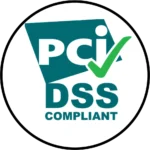
dotSec news – August 2024
News and updates – August 2024 In this newsletter: Recent dotSec certification achievements and training news. Read about a recent dotSec GRC project that focused on ISO/IEC 27001:2022 preparation. Meet Gautham, Head of Governance, Risk and Compliance (GRC) at dotSec and learn more about dotSec’s GRC services. Cyber security expertise

Excellence is not an act!
Excellence, then, is not an act! It’s a saying that has been attributed to Aristotle and an American pro football player, but it was probably penned by author Will Durant: “Excellence, then, is not an act, but a habit.” Whoever wrote it first, it’s a sentiment worth remembering and since

Law Firms And Cyber Tech
Security tech and law firms: Don’t just do it! The shiny allure of technology is so enticing and the siren’s call, “Just buy this thing and all your pain will go away”, is almost irresistible. With the proper approach, various technologies really can help firms to manage their level of

A long life with ISO 27001!
Happiness and a long life with ISO 27001! “Data is the new oil!” The phrase was famously uttered by British mathematician Clive Humby nearly 20 years ago but it’s often used today, not in its original context, but to try to convey the idea that data is valuable in its own right.

TPSP AOCs save you money!
TPSPs score goals and save money! Protecting sensitive information has become a vital aspect of running any business, and one area that requires a high level of vigilance is payment security, especially for businesses that handle credit card (also known as cardholder) data. These businesses must adhere to the Payment

SharpC2 in the real world
Introduction to SharpC2 SharpC2 is an open-source (.NET based) command-and-control framework developed by RastaMouse. The main component of SharpC2 is the TeamServer (and related .NET rich client) which is responsible for both generating implants (called drones in SharpC2 parlance) as well as communicating with said implants when they are deployed


